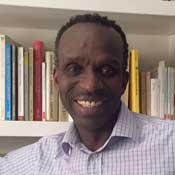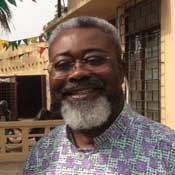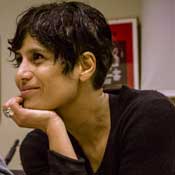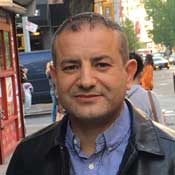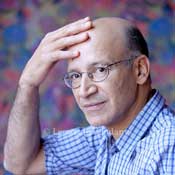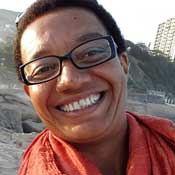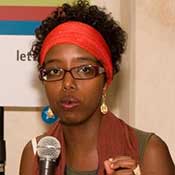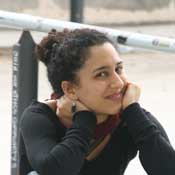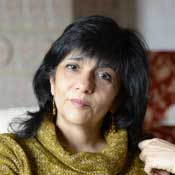Objectives
Objective 1: Political institutions and parties
How do governmental and political actors respond to the growing heterogeneity of their national societies?
Starting with the IX Legislature, during which the first immigration law (n. 943, 30 December 1986) was approved, we carried out a systemic search of all the legislative production in both the Chamber of Deputies and the Senate of the Republic, using the following key words: immigrazione, integrazione, immigrati, migranti, straniero, identità, nazionale, seconde generazioni, intercultura, cittadinanza, 2G, figli di immigrati, nuovi italiani. Moreover, we checked the agenda of each day of the considered legislatures, both for the Camera and the Senato. These parliamentary debates present a remarkable record of political discourse that reveals the contrasting visions of the Italian political parties on issues of national identity, migration, and integration. Here below you can find links to the most relevant laws and related parliamentary debates, as well as citizenship bills.
Laws and parliamentary debates on immigration
Legislatura IX (1983-1987)
Legge n. 943, 30 dicembre 1986
“Norme in materia di collocamento e di trattamento dei lavoratori extracomunitari immigrati e contro le immigrazioni clandestine”
Legislatura X (1987-1992)
Legge Martelli (Legge n. 39, 8 febbraio 1990)
“Conversione in legge, con modificazioni, del decreto-legge 30 dicembre 1989, n. 416, recante norme urgenti in materia di asilo politico, di ingresso e soggiorno dei cittadini extracomunitari e di regolarizzazione dei cittadini extracomunitari ed apolidi già presenti nel territorio dello Stato. Disposizioni in materia di asilo”
Legislatura XI (1992-1994)
Legge Mancino (Legge n. 205, 25 giugno 1993)
“Misure urgenti in materia di discriminazione razziale, etnica e religiosa”
Legislatura XII (1994-1996)
Decreto Dini (Legge n. 489, 18 novembre 1995)
“Disposizioni urgenti in materia di politica dell’immigrazione e per la regolamentazione dell’ingresso e soggiorno nel territorio nazionale dei cittadini dei Paesi non appartenenti all’Unione europea”
Legislatura XIII (1996-2001)
Legge Turco-Napolitano (Legge n. 40, 6 marzo 1998)
“Disciplina dell’immigrazione e norme sulla condizione dello straniero”
Legislatura XIV (2001-2006)
Legge Bossi Fini ( Legge n. 189, 30 luglio 2002)
“Modifica alla normativa in materia di immigrazione e di asilo”
Legislatura XVI (2008-2013)
Laws and parliamentary debates on national identity
Legislatura XVII (2013 – ongoing)
Atto Senato n. 3256
“ Istituzione della Giornata dell’Unità d’Italia”
Atto Senato n. 3366
“Norme sull’acquisizione di conoscenze e competenze in materia di ‘Cittadinanza e Costituzione’ e sull’insegnamento dell’inno di Mameli nelle scuole”
Citizenship bills discussed in the Parliament
A reform of the present nationality law has been discussed two times in the Parliament, in 2005 and in 2009. In both cases, the discussion did not lead to a final vote. Many other bills have been presented, but they never reached the debate in the Parliament. They can be retrieved here by typing ‘cittadinanza’ in the box ‘cerca per titolo’. During the XVII Legislature, a new bill was passed in 2015 by the Camera and is now pending at the Senato. Related to this discussion, a useful study report was produced by the Servizio Studi of the Camera and is available here.
Legislatura XIV (2001-2006)
Legislatura XVI (2008-2013)
The following bills were consolidated and discussed in the Senato on 22 December 2009 (seduta n. 261 ant.) and on 12 January 2010 (seduta n. 264 pom.):
Frassinetti et alii
“Norme sull’acquisizione di conoscenze e competenze in materia di “Cittadinanza e Costituzione” e sull’insegnamento dell’inno di Mameli nelle scuole”
Sbai et alii
“Modifiche alla legge 5 febbraio 1992, n. 91, in materia di acquisto della cittadinanza”
Sarubbi et alii
“Modifiche alla legge 5 febbraio 1992, n. 91, recante nuove norme sulla cittadinanza”
Paroli et alii
“Modifiche alla legge 5 febbraio 1992, n. 91, e altre disposizioni sulla cittadinanza”
Santelli et alii
“Modifiche alla legge 5 febbraio 1992, n. 91, e altre norme in materia di cittadinanza”
Fedi et alii
“Modifiche alla legge 5 febbraio 1992, n. 91, e altre norme in materia di cittadinanza”
De Corato et alii
“Modifiche alla legge 5 febbraio 1992, n. 91, e altre norme in materia di cittadinanza”
Bressa et alii
“Modifiche alla legge 5 febbraio 1992, n. 91, e altre norme in materia di cittadinanza”
Legislatura XVII (2013-ongoing)
Proposta di legge d’iniziativa popolare: “Modifiche alla legge 5 febbraio 1992, n. 91, recante nuove norme sulla cittadinanza”
The collection and analysis of government documentation (1986-2014) mainly focused on three ministries and two ministers:
Ministry of Education, Universities and Research
education has played a traditional role in the nationalization of societies, which justifies a close look at the ways this Ministry has addressed the growing ethno-cultural diversity of the Italian population also via the notion of ‘interculture’.
Ministry of Interior
however problematic, the nexus between immigration and security has become a prominent trope in political and public imagination. To map the production of this Ministry is therefore essential to understand how the legal incorporation of migrants and their children within the national society is regulated. Integration is also a key dimension of this process.
Migrant Integration Portal
Migrants’ Integration Portal is a website established with the purpose of fostering foreign nationals’ integration into the Italian society. The Portal has been on-line since 17th January 2012 (Governo Monti), and was developed through a project co-financed by the European Fund for the Integration of Third Country Nationals, under the coordination of the Ministry of Labour and Social Policy, and with the involvement of the Ministry of the Interior and the Ministry of Education, University and Research. It hosts a special section on ‘Second Generation’.
Ministry of Labour and Social Policies
given the traditional role of migrants as labour force, this Ministry has been at the forefront of regulating the incorporation of migrants into the Italian society. Relevant ministerial norms are published here.
Minister for Integration - Cécile Kyenge
created under the Government Letta in 2013, this minister, despite being short lived, put the ‘new Italians’ at the forefront of the government agenda. Before the Minister website was shut down, we were able to retrieve numerous documentation, available here.
This section contains individual semi-structured interviews which we conducted in person with representatives of political parties responsible for immigration and key political figures associated with past immigration laws. Interviews with prominent civic officers of relevant ministries were also administered, but they are not available on this web page due to anonymity reasons.
Marco Boato (Verdi)
“Considero francamente superato e da superare il termine ‘nazione’, sia per le origini etnicamente diversificate del popolo italiano, sia, e soprattutto ora, per la mutata composizione etnico-linguistica (e anche culturale e religiosa) dell’Italia…” – read more
Rocco Buttiglione (UdC)
“L’ospitalità suppone che ci sia una cultura che è quella del luogo che apre a altre culture che entrano e nell’aprire inevitabilmente detta lei le regole perlomeno nella prima fase” – read more
Khalid Chaouki (PD)
“La parola ‘nuovi Italiani’ per me è una grande sfida culturale […] anche per la costruzione della Nuova Italia” – read more
Gianfranco Fini (Libera Destra)
“Integrazione è quando, pur non essendo la terra dei tuoi padri, la senti come la tua” – read more
Cécile Kyenge (PD)
“Per me se fra cinque anni si smettesse di dire Nuovi Italiani sarebbe proprio l’ideale e parlassimo tutti di italiani e basta… non vecchi, nuovi.” – read more
Lega Nord (Anonimo rappresentante)
“Ogni popolo ha la sua cultura e tradizione e deve mantenerla. Tu hai la tua, io ho la mia. Se vieni da me acquisisci la mia cultura…” – read more
Enrico Letta (PD)
“il tema è culturale… cioè come rendere evidente al paese che una configurazione cromatica ed articolata fa parte della vita normale” – read more
Claudio Martelli (ex PSI)
“Nei dieci anni in cui rimase in vigore la legge Martelli abbiamo avuto una media di incremento degli immigrati di [solo] circa cinquantamila all’anno” – read more
Erasmo Palazzotto (SEL)
“Io penso che il concetto di nazione oggi vada declinato in maniera del tutto plurale, nel senso che io sono cittadino italiano dentro una cittadinanza europea, e penso che i processi di co-integrazione servano anche a rilanciare e cambiare l’idea stessa di nazione.” – read more
Fabio Rampelli (Fratelli d’Italia)
“Non mi spaventa un’integrazione che faccia sintesi di culture e sensibilità diverse ma questa sintesi può avvenire solo e soltanto se si mantiene in vita una centralità, una profondità, una verticalità dell’identità italiana…”
– read more
Giorgio Sorial (M5S)
“L‘identità nazionale non può essere imposta, l’Italia è l’Italia oggi, perché è l’Italia che rappresenta il popolo italiano e il popolo italiano oggi è fatto di persone come me che hanno origini straniere che hanno genitori stranieri, ma sono italiani” – read more
Giorgio Silli (Forza Italia)
“Potessi tornare negli anni sessanta, dove la domenica mattina tutti vanno alla messa, poi vanno in centro a fare due chiacchiere”.
– read more
Achille Totaro (Fratelli d’Italia):
“La cittadinanza italiana è un premio che io do a una persona che viene qui, rispetta certe regole, certi canoni, dimostra di conoscere la lingua italiana…” – read more
Livia Turco (PD)
“Io non credo che noi dobbiamo chiedere agli immigrati di rinunciare a se stessi; quello che dobbiamo chiedere è di partecipare a un tavolo comune e a partire da se stessi, riconoscendo regole e valori del paese ospitante, contribuire ad arricchirli” – read more
Objective 2: ‘New Italians’
What kind of nation do migrants and their children envision?
Children of migrants, often labelled as ‘second generation’ (2G), have created various associations to voice their claims of national belonging (including the demand for a reform of the nationality law). Many of them are present online and in their forums they also discuss issues related to their daily lives as ‘New Italians’. Some of these associations have also partnered with the Italian government in supporting the Manifesto delle Seconde Generazioni.
Here below you will find a list of the main 2G associations. The content of their websites has been analysed and some of the most active members have been interviewed. A longer list of 2G associations and websites can be found in the Resources.
‘New Italians’ are increasingly active in video-making. Some of these films or short videos explicitly address issues of national belonging and identity. Here below you will find the links to the three films analysed as part of our research. Individual semi-structured interviews were also conducted in person with their film directors. A longer list of relevant films and videos is available in Resources.
GeNEWration, secondi a nessuno (2012)
Directors: Amin Nour, Pietro Tamaro
Short movie produced by Baburka production in 2012. It received an award at the Video Arte del Macro, Rome in 2013. The script revolves around encounters in a small bar located in the popular neighbourhood of Tor Pignattara in Rome. It portrays the new generation of Romans made up of youth with and without foreign background – henceforth the title GeNEWration.
The New Italians (2012)
Director: Sherif Fathy Salem
Produced by SPOT1.TV Film Production for Aljazeera Documentary Channel, the documentary focuses on the so-called ‘second generation’ (2G). Young people of Arab-Muslim culture, born and/or grown up in Italy, talk about their double sense of belonging.
18 Ius Soli: chi nasce in Italia è italiano (2011)
Director: Fred Kuwornu
Directed and produced by Fred Kuwornu, 18 Ius Soli is a documentaristic account of the lifes of some new Italians. At the same time, it aims to foster the legal and cultural debate on the right to citizenship for those who are born in Italy to foreign-born parents.
Hip-hop has traditionally been used by minority groups and cultures as a way to voice their discontent. In the case of Italy, this form of music has been increasingly used by ‘new Italians’ as a way to make themselves visible, challenging stereotypes about their diversity and claiming full citizenship rights. As part of our research, we interviewed some of the most popular Italian rappers with foreign background, whose songs often are driven by political claims around citizenship, identity and belonging. A list of Italian rappers with foreign background is available in Resources.
Amir Issaa
“Più di mezzo milione di persone, che vivono nascoste, stranieri in questa nazione, ci sta Daniel, ci sta Amir c’è Simone, vogliamo i nostri diritti non chiediamo un favore, ci nasci ci cresci la ami la vivi, e a diciotto costretti a fuggire come clandestini…”
Mista Tolu
“Le radici sono in Africa, però son cresciuto qua. Questa sì è la mia nuova vita, ma la gente non lo sa. Non sono straniero, solo solo stra-nero”
Zanko El Arabe Blanco
“Son cresciuto nel quartiere della Centrale-station dove dire immigrato era dire criminale-nation e quando rivelavo che la mia famiglia era tale attention please mi davan del particolare, tu sembri normale, come se la normalità fosse una conquista eccezionale non dipende mai da te dipende dalla classe sociale, dal colore della tua carnagione personale”
Valentino AG
“Ancora fa strano sentirmi il Romano, non è per il colore che non ci capiamo, vuoi capire il mondo in cui viviamo, come te son cresciuto pasta burro e parmigiano”
Mike Samaniego
“Parlo pure col dialetto, sono nato in questo stato e come i vostri figli anche io ho studiato… dopotutto se il cognome suona solo un po’ diverso, l’apparenza a volte inganna come dice un vecchio detto”
Since the 1990s, there has been an increasing production of literature written by migrants and their children. The topics of these novels are multifarious. Yet, for the purpose of our research, we analysed literary texts than more than others address, either directly or indirectly, issues of national identity and belonging. Individual interviews with their authors are available here below. A bibliography on Italophone literature is available on Resources.
Antonio Dikele Distefano
Born in Busto Arsizio to Angolan parents and grown up in Ravenna, Dikele Distefano has reached national fame with the novel Con Fuori piove, dentro pure, passo a prenderti? (2015), a novel which explores how the line of colour can impact on a love story.
Interview
Pap Khouma
Traditionally indicated as the founding father of the Italian migration literature for Io, venditore di elefanti (1990), he wrote about ‘second-generation migrants’ and Black Italians in Noi italiani neri (2010).
Interview
Kossi Komla-Ebri
With Imbarazzismi (2002) and Nuovi imbarazzismi (2004), Kossi Komla-Ebri has explored daily racism in Italy through its most ‘embarassing’ aspects.
Interview
Gabriella Kuruvilla
Gabriella Kuruvilla, writer and painter, maps cities and territories, as in Milano, fin qui tutto bene (2012) and in various anthologies of short stories.
Interview
Amara Lakhous
Born in Algiers and in Italy since 1995, Lakhous writes about the conflicts and the attempts at multicultural integration in contemporary Italian society, elaborating on the rich Italian cinematographic tradition of the “commedia all’italiana”.
Interview
Tahar Lamri
I sessanta nomi dell’amore (2006), by the Algerian-born, Italophone author Tahar Lamri, goes to the heart of the processes and conflicts of the so-called “intercultural encounter”.
Interview
Ingy Mubiayi
Born to an Egyptian father and a Zairian mother, Ingy Mubiayi is the author of the short stories included in the anthologies Pecore nere (2005) and Amori bicolori (2008)
Interview
Igiaba Scego
Born and grown up in Rome, Scego is maybe the most known Afro-Italian author. In her numerous writings, she explores identity issues from multiple perspectives, with a particular attention to (post)colonial Italy.
Interview
Nima Sharmahd
In her book Un’italiana non italiana (2011), the author, born in Florence to parents of Iranian origin, describes the difficulties and the paradoxes of foreigners and “second-generation migrants” in their encounter with the Italian bureaucracy.
Interview
Laila Waidia
From India to Trieste, Laila Wadia qualifies herself as a “storyteller”, through her short stories, novels, poems, newspaper articles and screenplays.
Interview
Objective 3. The majority society
How does the majority society respond to the demographic change?
This section explores the views of the majority society, namely Italians without foreign background, regarding Italy’s demographic transformation, the politico-institutional responses put in place to deal with this transformation and the demand of inclusion voiced by the ‘new Italians’. Given the importance of the school as a primary site for the nationalization of societies and the fact that the school offers a space where the majority society meets the ‘new Italians’ in the everyday life, the research focused on the opinions of students and their teachers. To this end, six high schools were selected in various areas of Milan:
Two ‘licei’ located in the city center, characterized by a relatively low presence of children of immigrants and students coming from medium-high income families.
Two vocational schools located in the periphery, characterized by a relatively high presence of children of immigrants and students coming from medium-low income families.
Two ‘licei’ located between the city center and the periphery, characterized by a medium presence of children of immigrants and students coming from mixed income families.
Milan is one of the Italian cities with the highest presence of foreign-born people and their offspring. As such it offers a good case study to explore the relationship between nation and diversity. Data were collected anonymously via focus groups (for students) and individual interviews (with teachers and school administrators).
newitalians©2016 | built by: @jsonfellin


